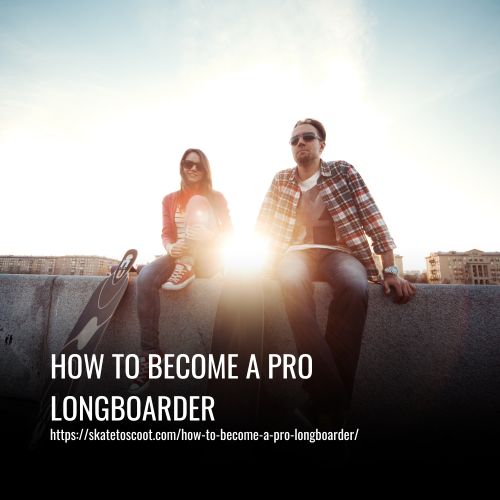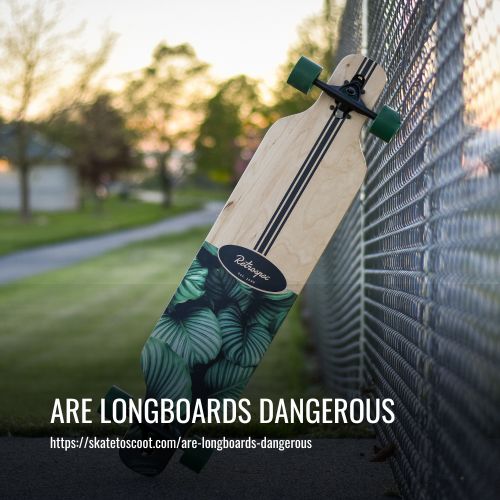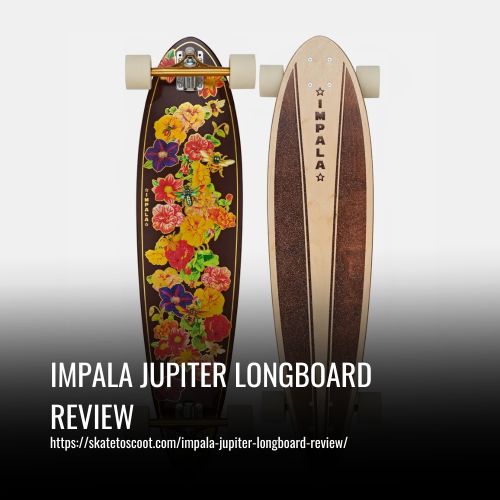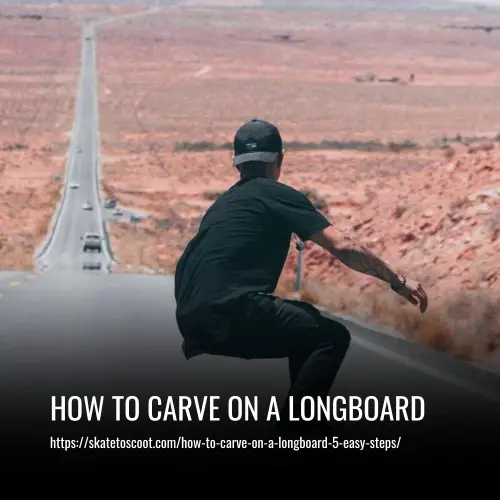As an Amazon Associate we earn from qualifying purchases.
To Become A Pro Longboarder, Follow These Steps:
- Find the right Longboard for your style of play
- Find your balance in static mode
- Practice your turn posture
- Practice your push and brake posture
- Learn how to carve to slow down
- Learn to slide

How To Become A Pro Longboarder
1. Find the right Longboard for your style of play
Finding the right longboard for your style of play is crucial in maximizing your enjoyment and performance. With the wide range of longboard options available, it’s important to consider your personal preferences and the specific discipline of longboarding you’re interested in. Here are some tips to help you find the perfect longboard for your style:
- Determine your riding style: Longboarding encompasses various disciplines such as cruising, downhill, freeride, freestyle, carving, and more. Identify the style that appeals to you the most to narrow down your longboard options.
- Consider your body weight and height: Different longboards are designed to support different body weights and heights. Make sure to choose a longboard that can accommodate your weight and provide adequate stability.
- Choose the right deck length: The length of the longboard deck plays a significant role in its stability and maneuverability. Longer decks (35-45 inches) are ideal for downhill riding and freestyle, while shorter decks (around 35 inches) are suitable for cruising and carving.
- Find the right deck shape: Longboard decks come in various shapes, such as drop-through, pintail, kicktail, and more. Each shape offers different benefits in terms of stability, control, and maneuverability. Experiment with different shapes to find the one that suits your riding style.
- Select the appropriate wheel size and hardness: Wheel size and hardness impact the performance of your longboard. For downhill riding, opt for larger wheels (70-80mm) with a harder durometer for maximum speed and control. Smaller wheels are better suited for cruising and carving.
- Consider the deck construction: Longboard decks are constructed using different materials, such as bamboo, maple, or carbon fiber. The construction affects the board’s flexibility, responsiveness, and durability. Choose a construction that aligns with your preferences and riding style.
- Test before you buy: If possible, try out different longboards before making a purchase. This will help you determine which board feels most comfortable and suits your style of play.
2. Find your balance in static mode
To find your balance in static mode while longboarding, start by practicing on a stable surface such as grass or a thick carpet. Place your longboard on the ground and step onto it, positioning your feet shoulder-width apart or slightly wider depending on the length of your board. Make sure your feet are near or on top of the bolts of the board.
Next, adjust your foot positioning. Your back foot should be perpendicular to the board while your front foot should be angled slightly forward at around 45 degrees. This alignment will help you maintain stability and control while standing on the board.
Bend your knees slightly and lean forward to achieve a comfortable and stable posture. It’s important to find a balance where you feel secure and can stand without constantly needing to step down.
3. Practice your turn posture
Focus on shifting your body weight to either side to make the deck tilt. This movement mimics how you turn while riding on the board.
Once you feel comfortable with this ankle-based movement, the next step is to lock your ankle and rely solely on shifting your body weight forward and backward to make the deck tilt. This will help you develop control over your turns and maintain stability while riding.
If you want to further enhance your balance and stability before hitting the road, consider investing in a balance board. This training tool is excellent for improving your balance skills and is highly recommended for those serious about longboarding.
It’s important to note that learning the turn posture requires careful practice. Start on a flat surface before gradually progressing to more challenging terrains. Always prioritize your safety by wearing appropriate safety gear such as helmets. By mastering your turn posture, you’ll be on your way to becoming a pro longboarder in no time.
4. Practice your push and brake posture
To become a pro longboarder, it’s crucial to practice and perfect your push and brake posture. This skill is essential for any type of skateboard activity and requires a strong sense of balance. Here’s how to practice this technique:
- Find a safe and comfortable area to practice, such as a grassy spot or a carpeted room.
- Stand on your longboard with your front foot facing forward, your toes pointing towards the nose.
- Turn your shoulders and hips toward the direction you want to move.
- Lift your back foot off the deck while maintaining balance on your front leg.
- Shift your weight onto your front leg and slightly bend your front knee.
- Lower your back leg towards the ground, without moving your hips, and lightly touch the ground with your foot for a few seconds.
- Slowly bring your foot back onto the deck in its original position, while turning your shoulders, hips, and front foot back to their initial angle.
- Remember that balancing on one leg may be challenging at first, as the deck tilts from side to side. Stay patient and keep practicing.
5. Learn how to carve to slow down
To learn how to carve on a longboard to slow down, start by understanding the basic concept of carving. Carving refers to making successive turns in an S-shaped pattern on your longboard. It is an essential skill for controlling your speed while riding downhill.
When you are going down a slope and need to adjust your speed, carving can help you slow down. To carve properly, you need to lean strongly into each bend to rub the wheels on the road, which provides resistance and decreases your speed.
To execute a carve, begin by bending your knees, which lowers your center of gravity and improves your stability. When you want to carve using your toes, push your knees forward, shifting your weight onto your toes. This will initiate the turn and help you slow down. Conversely, when carving with your heels, pull your butt back, shifting your weight onto your heels. This will enable you to carve in the opposite direction and slow down further.
6. Learn to slide
Learning to slide on a longboard is a crucial skill for both transportation and control while going at high speeds. While it may seem challenging at first, with practice and persistence, you can become proficient in sliding. There are various techniques you can use to slide, with some being easier than others.
If you’re a beginner or not comfortable with high speeds, starting with a standing slide is recommended. This involves standing on your board and using subtle shifts in weight to initiate the slide. It’s a good way to get a feel for the motion and build confidence.
What is Professional Longboarding?
Professional longboarding is a sport that has gained popularity in recent years, offering a wide range of disciplines and styles for enthusiasts to explore. From cruising and downhill racing to freeride and freestyle, professional longboarding encompasses a variety of techniques and maneuvers.
Cruising is the most basic form of longboarding, focusing on relaxed riding and enjoying the smooth, flowing movements of the board. Downhill longboarding, on the other hand, involves high-speed descents on specially designed longboards, providing a thrilling and adrenaline-pumping experience. Freeride combines downhill elements with creative tricks and slides, allowing riders to showcase their style and creativity.
Freestyle longboarding emphasizes technical tricks and maneuvers, similar to street skateboarding. It involves performing flips, spins, and aerials, showcasing a skater’s agility and skill. Subsets of longboarding include carving, which involves making fluid turns and maintaining control, pumpking, simulating the pumping motion of surfing, surfskating, emulating the movements of surfing, slalom, navigating through cones in a precise manner, and tech sliding, combining tricks and slides with technical precision.
Tips To Become A Pro Longboarder
Practice Makes Perfect: To become a pro longboarder, you must commit to practice. Set aside time each day to ride and hone your skills. Concentrate on the basics such as balance, carving, and sliding–these are the fundamental techniques that all riders need to master. Additionally, be sure to wear protective gear such as helmets and pads, especially when practicing tricks.
- Start in a Group: Starting your longboarding journey with friends can make the experience more motivating and fun. It creates an encouraging environment where you can learn together and share tricks. Longboarding with others also enhances your sense of community and provides a support system.
- Choose the Right Longboard: With a wide range of options available, it’s important to choose a longboard that matches your interests and riding style. Consider factors such as body weight, the type of riding you want to do (downhill, freestyle, dancing, etc.), and personal preference. Research different longboard types, such as downhill boards, freestyle longboards, and hybrid longboards, to find the one that suits you best.
- Safety First: Don’t be afraid to invest in protective gear. Wearing a helmet and wrist guard is crucial to prevent injuries. As a beginner, it’s important to build confidence and stability on your board by avoiding unnecessary crashes. Proper safety gear will give you the confidence to push your limits and progress in your longboarding skills.
- Start on Flat and Wide Roads: When starting out, choose flat and wide roads that are less crowded and without cars. This allows you to focus on improving your balance, stability, and basic riding skills without worrying about traffic or steep slopes. By practicing on flat terrain, you can gradually build your confidence before progressing to more challenging environments.
- Embrace the Addiction: Longboarding is addictive in a good way. Once you taste the fun and excitement of longboarding, it’s hard to stop. Embrace this addiction and fully immerse yourself in the discipline of longboarding. Keep pushing yourself to learn new tricks, explore different riding styles, and challenge your limits.
FAQs
Longboarding is a sport that involves riding a longer skateboard, known as a longboard. It originated in the 1950s as an offshoot of surfing. Duke Kahanamoku, a legendary surfer, is often credited as one of the pioneers of longboarding.
There is a wide range of longboard types suited for various riding styles. Some popular ones include downhill longboards for high-speed rides, freestyle longboards for tricks and maneuvers, and dancing longboards for fluid and artistic movements.
Safety is paramount, so invest in a good quality helmet that fits properly. Wearing wrist guards and knee pads is also recommended to protect yourself from falls and injuries. Additionally, consider purchasing a longboard that suits your riding style and personal preference.
Becoming a professional longboarder takes time, dedication, and practice. Joining a longboarding community and learning from experienced riders is a great way to improve. Push yourself to learn new tricks, explore different riding styles, and participate in competitions to showcase your skills.
Longboarding does not discriminate based on age or gender. Anyone with a passion for the sport and determination to learn can become a pro longboarder with time and effort.
Conclusion:
Becoming a pro longboarder is not just a dream, but a goal that can be achieved with passion, dedication, and perseverance. Remember, every great athlete starts as a beginner, so don’t be afraid to take that first step and start riding.
With the right mindset, practice, and a love for the sport, you can carve your way to success and ride the waves of your dreams. So grab your board, embrace the journey, and let the thrill of longboarding propel you towards greatness!
Amazon and the Amazon logo are trademarks of Amazon.com, Inc, or its affiliates.



